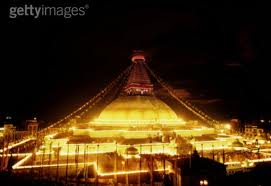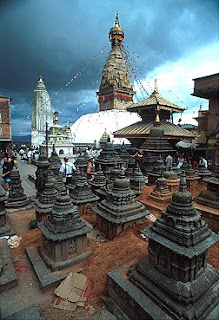BUDDHIST AND TOURISM IN NEPAL:
 |
| GOD BUDHA |
The Himalayan Kingdom , Nepal is located in South East Asia and is bordered by Tibet in the north and India Nepal Nepal Nepal
If, as a Buddhist tourist, you have not paid a visit to this country till now, start planning a trip right away for you are missing out something really significant. Relevant information that will help you plan out your trip in a detailed manner is provided in this section. Here, you will find information on specific Buddhist attractions that are worth visiting in Nepal
So, do not delay. Set out on one of the most memorable Buddhist sojourn of your life. The section is here to guide you at every step.
Kapilvastu:
 |
| GOD BUDHA WITH SHISYAS |
Kapilvastu, also known as modern Piprahwa in the Lumbini Zone of Nepal, is one of the most holy Buddhist centres globally. The capital city of the Shakya clan, and one of the earliest Republics in the world, Kapilvastu witnessed the childhood and early family life of the Buddha in the royal palace. It was at Kapilvastu, the prince saw sorrow, pain, disease and death, the four sights which disturbed Him and He abandoned His life in search of the reality of life, and became the Buddha. Twelve years later after He attained enlightenment, the son of the city came back to His home, but not as a prince but rather as the Buddha, who preached His sermons over here.
Major Buddhist Places :
Major Buddhist Places :
 |
| BIRTH PLACE OF GOD BUDHA, LUMBIMI, NEPAL |
EasternStupa Complex : The main archaeological site of Kapilvastu excavated in 1973-74, the Stupa complex is a major source to go back to the Buddhist glorious past. The seals and inscriptions found from this place refers to the golden age of Buddhism owing to the patronage provided by an Indian ruler, Kanishka. One of the inscriptions mentioned on the lid of a pot states: 'Om Deoputra Vihare Kapilvastu Bhikschu Mahasanghasa', which refers Kanishka as 'Deoputra', who built the biggest Vihara at Kapilvastu and renovated the main stupa, which contained bone relics of the Buddha.
· TheRoyal Palace : The 1973-74 excavations unearthed the ruins of the palace of King Shuddhodhana
· Sri Lankan Monastery : There is a small Sri Lankan monastery in Kapilvastu, which has a statue of the Buddha and offers meditation and other Buddhist practices.
· Mahinda Mahavihara : A small monastery which offers the Buddhist practices and a 'math' for the Buddhists, is on the name of prince Mahindra, the son of Indian emperor Ashoka.
· The
· Sri Lankan Monastery : There is a small Sri Lankan monastery in Kapilvastu, which has a statue of the Buddha and offers meditation and other Buddhist practices.
· Mahinda Mahavihara : A small monastery which offers the Buddhist practices and a 'math' for the Buddhists, is on the name of prince Mahindra, the son of Indian emperor Ashoka.
Nearby Buddhist Attractions:
Lumbini :
 |
| ASHOK STUPA, LUMBINI, NEPAL |
The birthplace of Lord Buddha, then a small, but beautiful garden, is at a distance of 27 km from Kapilvastu and one of the major holy places for the Buddhists around the world.
How To Reach
By Air - Kapilvastu can be reached by two ways. One can either take a flight toKathmandu , Nepal , which is 262 kilometers from Kapilvastu, or can opt for a shorter route by taking a flight for Gorakhpur , India Gorakhpur Gorakhpur
How To Reach
By Air - Kapilvastu can be reached by two ways. One can either take a flight to
Br Train - The nearest rail head in Naugarh, 20 Kilometers from Kapilvastu which is connected to the cities of Uttar Pradesh, India
By Road - Another ption to reach Kapilvastu is by road, as it is connected to all other major places of India and Nepal - Lumbini(27 km), Kathmandu (262 km), Gorakhpur (110 km), Kushinagar(148 km), Varanasi (312 km), Sravasti(147 km)and Lucknow
Kathmandu:
 |
| SWAYAMBHUNATH, KATHMANDU |
The capital city of Nepal, Kathmandu lies right in the heart of the
For first time tourists,
Buddhism in Kathmandu
Legends say that the area where
Today, Kathmandu is the best place to explore Buddhism in Nepal Nepal
Buddhist Attractions
Buddhist Attractions
 |
| BAUDHA, KATHMANDU |
· Swayambhunath :
 |
| SWAYAMBHUNATH, KATHMANDU |
The second most important Buddhist shrine in Kathmandu , the Swayambhunath stupa is located at a hilltop. The stupa is extremely important for the Vajrayana Buddhists of Northern Nepal and Tibet
· Chabahil - Stupa :
· Chabahil - Stupa :
 |
| BAUDHA, KATHMANDU |
Located 1.5 km west of the Boudhnath Stupa, this stupa is not as well maintained as the former. In design, the Chabahil stupa reminds you of the Boudhnath Stupa. The hemisphere is plain and sits on a low platform while the shrines of the Dhyani Buddhas facing the four points of the compass. Reliefs depicting events from the life of Buddha appear below the shrine. Around the stupa are a number of chaityas, some of which date back to the Licchavi period. Each of these chaiteyas has a stupa of its own. The stupa compound also has what is considered one of the finest sculptures of the valley - a metre high free standing statue of Buddha Shakyamuni dating back to 6th century.
· Gorakhnath Cave and Ashura Cave : The cave is named after saint Gorakhnath who meditated in the cave and also left back his footprints on the rock that lie infront of it. A number of temples and monasteries are located around it including the one that is dedicated to Guru Rinpoche who introduced Buddhism inTibet
TheAshura Caves
· Gorakhnath Cave and Ashura Cave : The cave is named after saint Gorakhnath who meditated in the cave and also left back his footprints on the rock that lie infront of it. A number of temples and monasteries are located around it including the one that is dedicated to Guru Rinpoche who introduced Buddhism in
The
 |
| BUDDHIST TEMPLE, LUMBINI |
· The
How To Reach
By Air -The only international
By Road - Kathmandu can be reached by bus from Varanasi and Lucknow in India as well as other parts within Nepal
For getting around, motorised or bicycle driven rickshaws, buses and taxis are available.
Lumbini
 |
| LIMBINI, NEPAL |
Lumbini is the place where the founder of Buddhism and apostle of peace and enlightenment, Lord Buddha was born in 623 B.C.E. It is said that in the Parinibbana sutra, the Buddha had Himself declared the four places of future pilgrimage - His birthplace Lumbini along with the place of His enlightenment (Bodh Gaya), His first discourse (Sarnath) and His death (Kushinagar). Therefore, Lumbini, a small place in the South-Western Terai of Nepal
Major Buddhist Attractions
· Sanctum-Sanctorum of the Birthplace : The Sanctum Sanctorum is the most important place for the Buddhists as it is the exact spot of the of Lord Buddha's birth.
· Maya Devi Temple : The Maya Devi temple has been dedicated to the birth of the Lord Buddha and His mother, Maya Devi. Several Buddhist devotees have built beautiful shrines in the temple's premises, which was probably built on the Ashokan stupa.
· Puskarni : The Sacred Pool - The sacred pool, Pushkarni is situated in the south of the Ashokan Pillar. It is believed that Maya Devi, Siddhartha's(Buddha) mother, had taken a holy dip in Pushkarni before giving birth to the Buddha. Even the infant Siddhartha was given his first purification bath in the pool.
· Sanctum-Sanctorum of the Birthplace : The Sanctum Sanctorum is the most important place for the Buddhists as it is the exact spot of the of Lord Buddha's birth.
· Maya Devi Temple : The Maya Devi temple has been dedicated to the birth of the Lord Buddha and His mother, Maya Devi. Several Buddhist devotees have built beautiful shrines in the temple's premises, which was probably built on the Ashokan stupa.
· Puskarni : The Sacred Pool - The sacred pool, Pushkarni is situated in the south of the Ashokan Pillar. It is believed that Maya Devi, Siddhartha's(Buddha) mother, had taken a holy dip in Pushkarni before giving birth to the Buddha. Even the infant Siddhartha was given his first purification bath in the pool.
 |
| DIP JYOTI, LUMBINI |
· The Ashokan Pillar : The Ashokan Pillar has the privilege of being the first epigraphic evidence related to the life history of Lord Buddha. The Asokan Pillar pays tribute to the Buddha and his birthplace, Lumbini in the Brahmi script.
· The
· The
·
Nearby Buddhist Attractions
· Kapilavastu : Kapilavastu, a holy place related to the early life of the Siddharta Gautama, is located approximately 27 kilometers away from Lumbini.
· Aroarakot : Aroarkot is a rectangular fortified area related to the childhood of Siddhartha Gautama or Lord Buddha.
· Gotihawa : It is a small village which has an Ashokan pillar standing in a slab, though only the lower part of the pillar(3.5 meter high) is still intact, with upper portion broken and lost with the passage of time. Along with the pillar, there is a huge stupa made of successive rings of wedge-shaped Mauryan bricks.
 |
| KAPILVASTU, NEPAL |
· Niglihawa : The historical site of Niglihawa holds its importance in its archaeological treasures of the Buddha's life. The site includes a pillar inscription erected in Brahmi script which records Ashoka's visit to Niglihawa in the 14th year of his tenure.
· Kundan : Kundan is a small village having a huge structural ruin along with a cluster of four mounds, excavated in 1962 and a tank.
· Sagarhawa : Sagarhawa is a huge forest area, from where the ruins of a large rectangular tank, now known as Lumbusagar, was excavated in 1895 by an archaeologist Dr. Aslois A Fuhrer and his team. How To Reach ?
Br Air - One can take a flight to Kathmandu, the capital of Nepal, which has an easy access to domestic as well as International flights. Again from